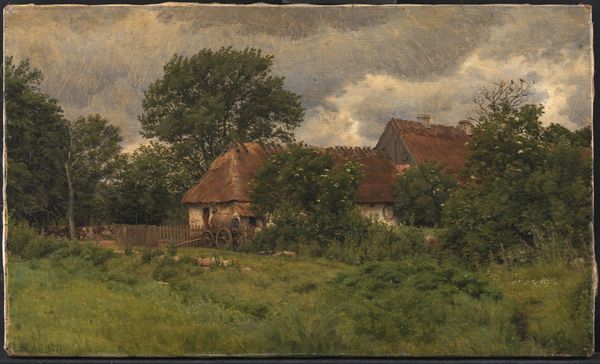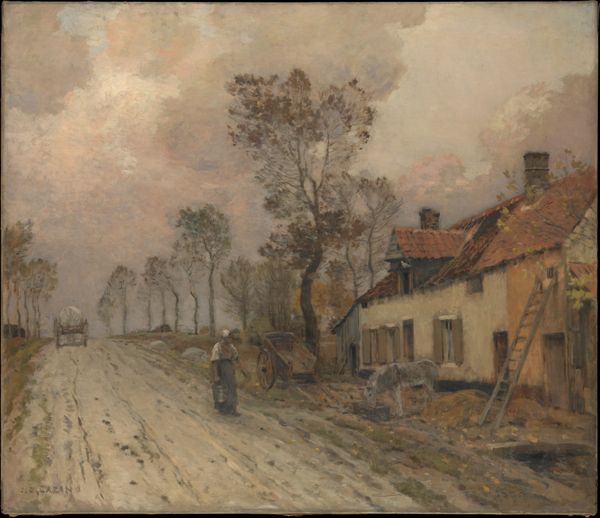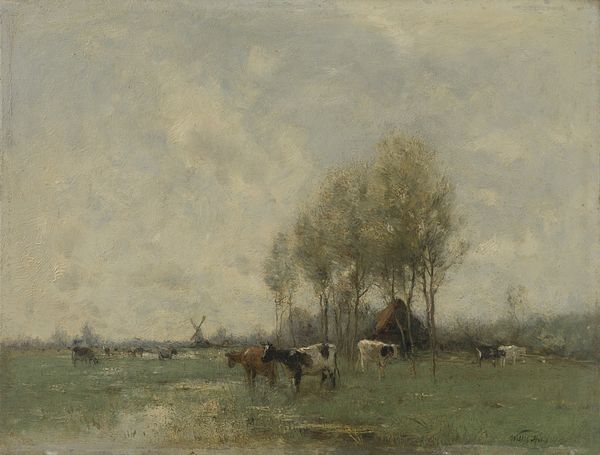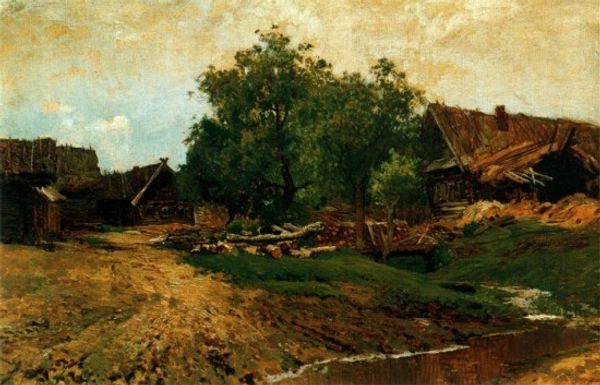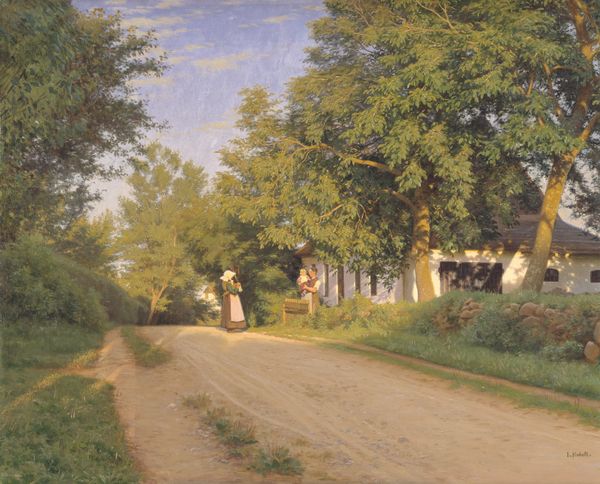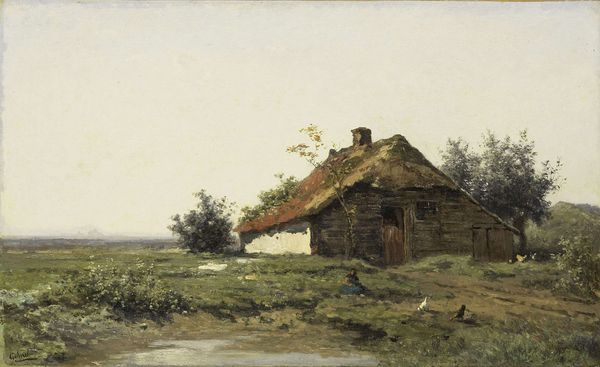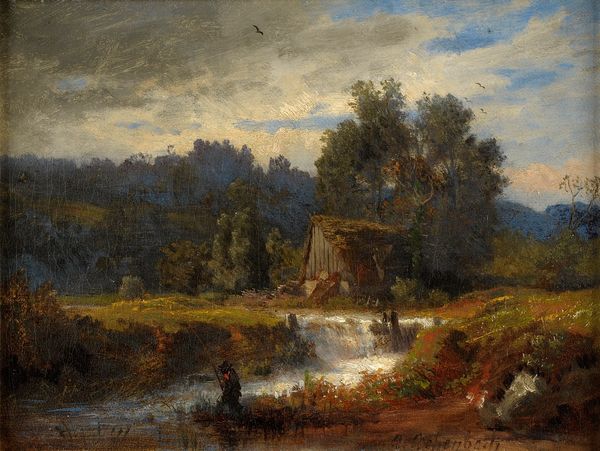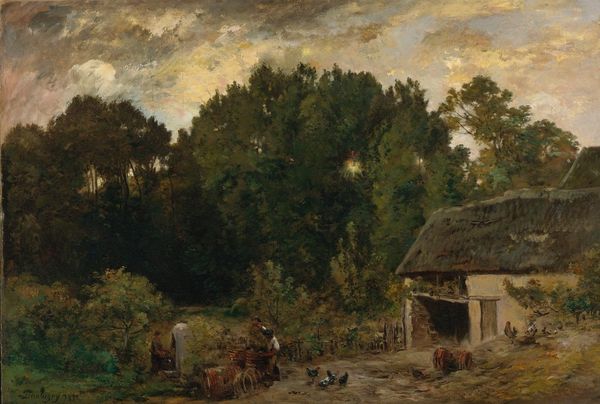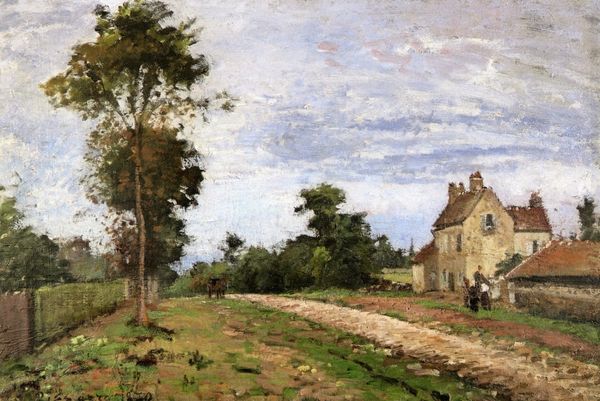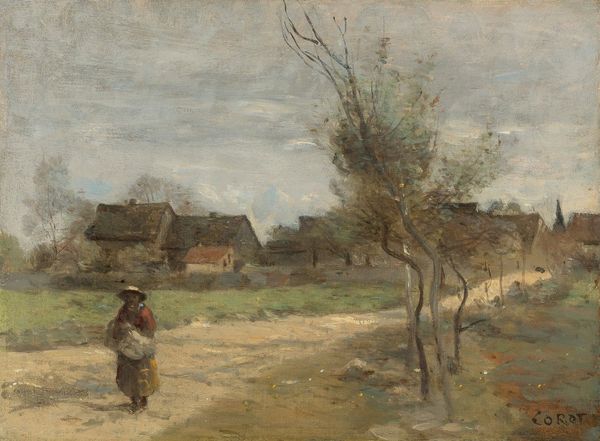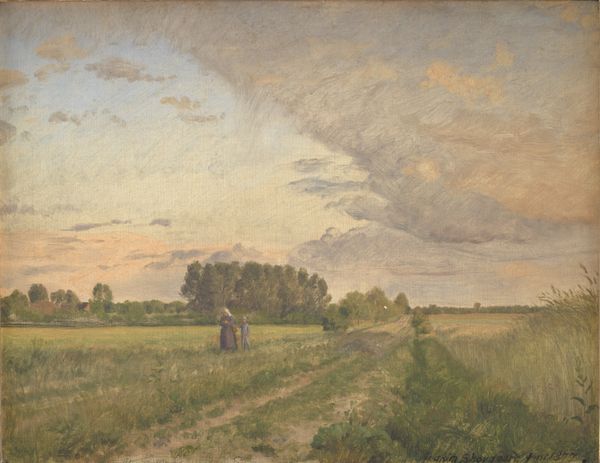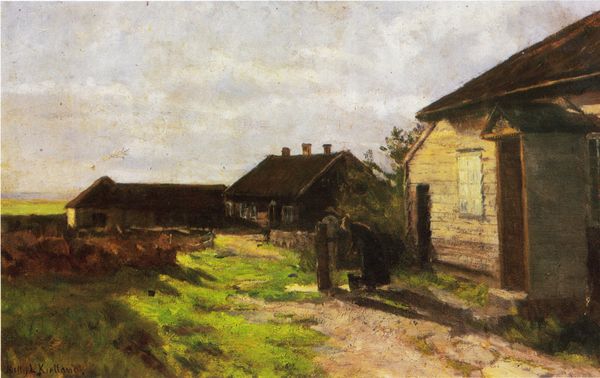
painting, plein-air, oil-paint
#
dutch-golden-age
#
painting
#
plein-air
#
oil-paint
#
landscape
#
genre-painting
#
realism
Dimensions: height 37 cm, width 50.5 cm, depth 12 cm, weight 10 kg
Copyright: Rijks Museum: Open Domain
Anton Mauve made this oil on panel painting, ‘Huisje aan de zandweg’ or ‘House on the sandy road’, sometime in the mid-19th century. It depicts a humble scene of rural life, somewhere in the Netherlands. But how might we see this painting as more than just a neutral depiction of the countryside? Mauve was part of the Hague School, a group of artists who turned away from the grand history painting that had dominated European art academies for centuries. Instead, they chose to paint everyday scenes. In doing so they challenged the traditional hierarchy of artistic subjects. Here, the subdued palette and loose brushwork create a sense of intimacy, inviting the viewer to appreciate the simple beauty of the Dutch landscape. The figures are anonymous, and the house looks modest. Yet by placing these subjects in the foreground, Mauve elevates their importance. The painting suggests the value of rural life at a time when industrialization was rapidly changing Dutch society. By studying the art criticism and exhibition records from the period, we can better understand how Mauve and his contemporaries were contributing to a broader cultural conversation about the role of art and the importance of representing ordinary people.
Comments
No comments
Be the first to comment and join the conversation on the ultimate creative platform.

